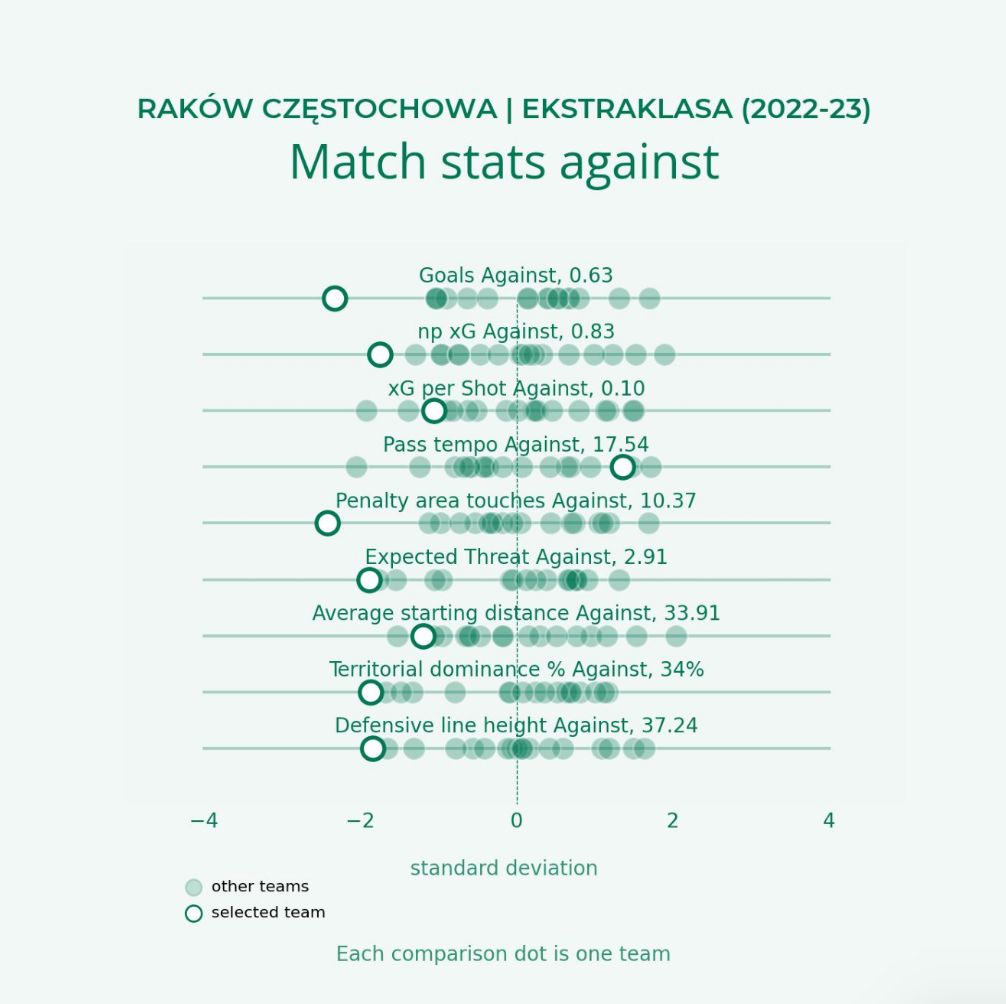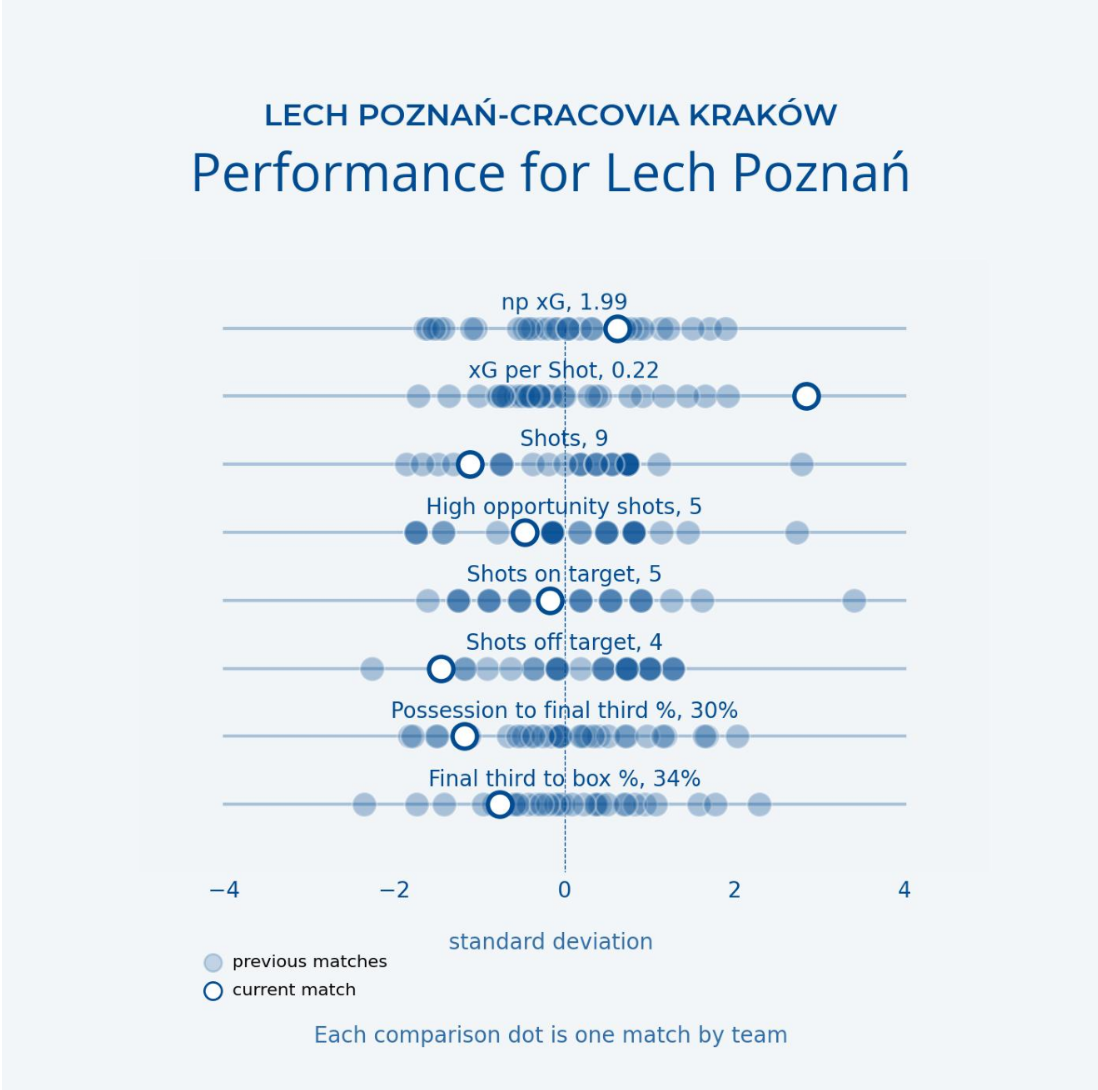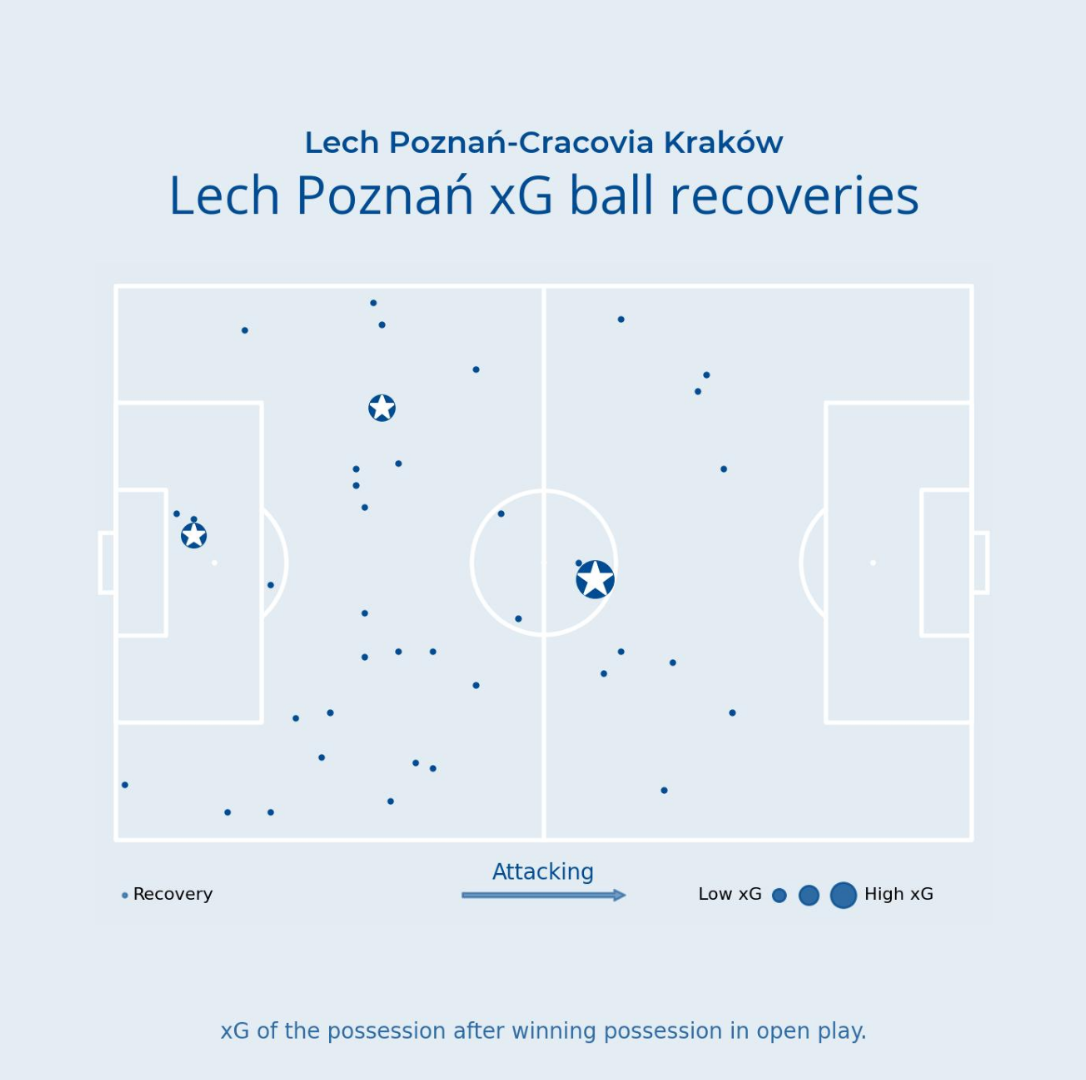Match and season reports
In this post we look at how to get started with data at your club by using match and season reports.
At a recent course for the Polish Football Association, we analyzed a match report from a recent game between Lech Poznan and Cracovia Krakov. Let’s start with a match summary of the game (which Poznan won the game 3-0)
To understand more about the game from the perspective of Lech Poznan, we compare teams to their own earlier performances on a whole range of KPIs. Here are some of the most important measurements.
The white dot is the performance in the match itself, while the blue dots are earlier matches in the season. So, we see that Poznan had higher xG per shot in this match than in any other. Despite the favourable scoreline, we can see that Poznan didn’t play their usual game of possession football, penetrating the final third. Drilling down one more level we looked at where they won the ball back and how they entered the final third.
When we work with clubs, we add visualisations to the match reports, based on the requirements of the coaching staff. You can download the full report for this match to get a feeling for what we include.
David Sumpter and Aleksander Andrzejewski talk to coaches and analysts in Poland
The course participants (many of whom had not used data before) were quick to pick up the methods involved (including expected goals and expected threat) and they delivered insightful reports, including video linked to data, to their coaching colleagues.
Season reports
In the next session move on to look at season reports. In focus here were (soon to be) Raków Częstochowa. In these summary statistics, we now compare teams to the league as a whole.






Raków’s high ball retention, counterpress, ability to get and control the ball in the box characterise the way they won the league. You can download the season report here, breaking down player contributions, set pieces, as well as defensive statistics, such as ball recoveries. We also show how each metric has changed over time.
Match and season reports are a quick way to get your team moving in a data-driven direction. Once you have understood your own team in numbers, these reports make opposition preparation easier and faster, they allow you to start to think about how well players fit your style of play and they allow everyone in the club to talk a common language about team performance.






